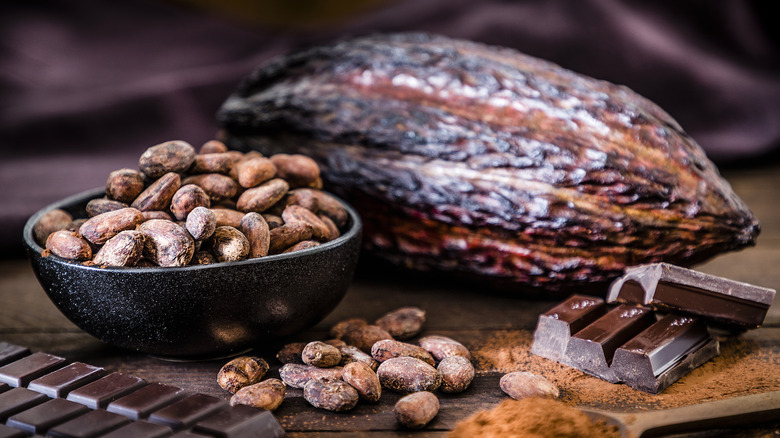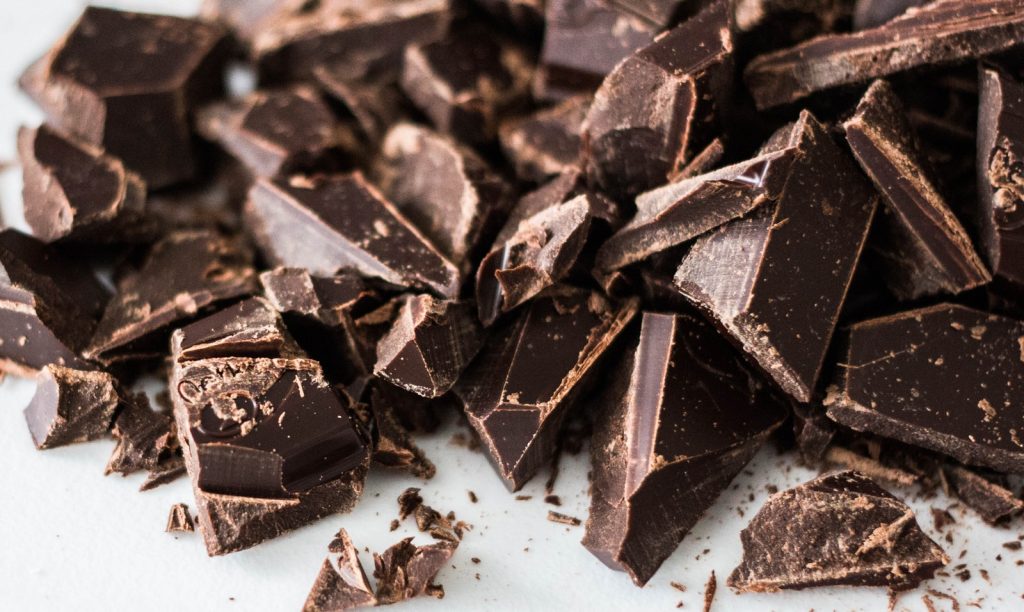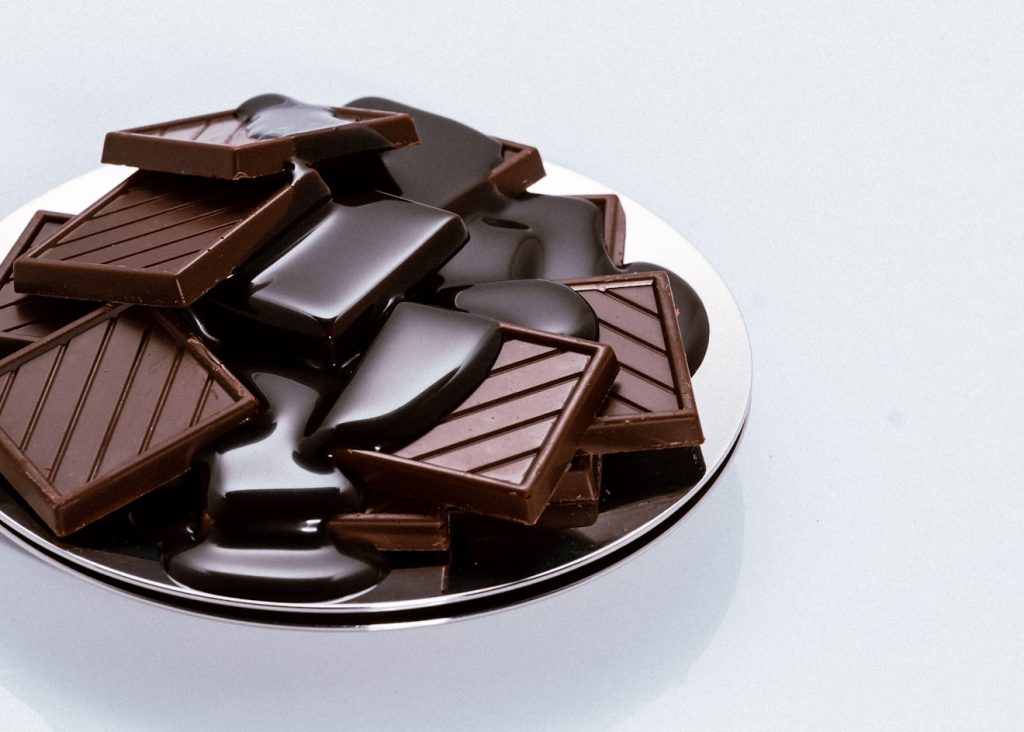Table of Contents
If you’ve ever found yourself staring at a bag of chocolate compound vs couverture, scratching your head in the baking aisle—yeah, you’re not alone. Bakers and confectionery business run into this all the time. The choice can seriously mess with your workflow and, honestly, the taste buds of your customers.
Now, here’s a fun tidbit: the global chocolate market (real and compound) is set to blow up from $36.6 billion in 2024 to nearly $60 billion by 2032. That’s a lotta cocoa dreams, right? Anyway, before you dive in, you gotta weigh stuff like price, how easy it is to use, and what you’re actually making. Fancy truffles for a high-end party or just banging out a bunch of cake pops for a kid’s birthday? Totally different needs.
Defining the Ingredients: Cocoa Content and Composition

Let’s break it down—chocolate compound and couverture chocolate are basically from different planets. Compound chocolate? That stuff’s kind of the shortcut—think 10-30% cocoa solids, and they swap in vegetable oil instead of cocoa butter. Cheap and easy, like the box wine of the chocolate world. Melts without a fuss, too, which is why so many people use it for dipping or coating when they don’t want to deal with tempering.
Here, we’re talking 30-40% cocoa, loaded with cocoa butter. It’s kinda fussy, sure, but that’s why it tastes like heaven—rich, smooth, melts in your mouth, makes you want to write poetry about dessert. If you want chocolate that’ll actually impress someone, couverture’s where it’s at.
- What Makes Chocolate Compound?
Chocolate compound is type of chocolate, it’s basically cocoa powder, a bunch of sugar, and, instead of the fancy cocoa butter, you get vegetable fats tossed in—think palm oil and coconut oil. Why? ‘Cause it’s way cheaper, honestly. Most big chocolate makers aren’t gonna splash out on real cocoa butter if they don’t have to.
What’s the benefit? You don’t have to mess around with tempering. No heating, cooling, to get perfect snap and shine. Just melt it, pour it, and you got chocolate shapes or a coating or whatever you want. Super handy if you’re running a bakery or candy shop and don’t have time to babysit chocolate all day.
Plus, those oils? They don’t easily break if it gets a little warm or cold. So your chocolate doesn’t melt into a puddle or turn into a weird, chalky mess when the weather changes. That’s a win for anyone making loads of sweets at once. Compound chocolate is basically the workhorse of the confectionery world.
- The Richness of Couverture Chocolate
Couverture chocolate? Oh, that’s the fancy stuff. Real deal. It packs at least 31% cocoa solids—sometimes way more—and doesn’t skimp on cocoa butter either. That’s why it tastes so much richer than the average chocolate bar you snag at the checkout lane. Plus, that glossy sheen? Yeah, it’s not just for show. The pros love this stuff because you can temper it (basically chocolate magic), which gives it that snappy bite and smooth-as-silk melt.
For professionals in the confectionery industry, the appeal of couverture chocolate lies in its versatility and exceptional qualities. Tempering, dipping, melting, flavoring, uses couverture. It integrates seamlessly into ganaches, truffles, and various dessert applications due to its ability to hold a beautiful shine while providing a satisfying snap when tempered. As a result, businesses dedicated to high-quality, artisan products often gravitate toward couverture chocolate, despite its higher price point, to meet customer expectations for luxury and satisfaction.
Pricing Paradigms: Evaluating Cost vs. Quality

Real—money talks, especially in the world of sweets. Candy makers are always juggling cost and quality, and when it comes down to picking between chocolate compound and actual couverture, the wallet usually gets a hefty say. Compound chocolate? Yeah, it’s cheap, but people can taste the difference. Skimping might save you a few bucks up front, but it could totally backfire if your treats end up tasting meh and customers bounce. Now, couverture—this is the fancy stuff.
More cocoa butter, the good kind of ingredients, super fussy about how it’s made and stored. No surprise, it’ll cost you more. But for some, that silky, legit flavor is worth every extra money. However, regular chocolate is far less expensive, which makes it perfect for baking on a daily basis. Evaluating these aspects ensures that choices align with the brand’s overall vision and market positioning.
- Cost Analysis: The Price Tag of Choices
Honestly, figuring out how much chocolate costs isn’t rocket science, but it does take a bit of poking around. Chocolate compound? That stuff usually sits somewhere between $2 to $5 a pound, so if you’re trying to keep costs down, it’s a total lifesaver. Now, if you switch over to couverture, brace yourself—it can hit $10 a pound or even more.
So, if you’re running a business, you really gotta keep an eye on those numbers. Are you gonna make enough cash to justify splurging on the fancy stuff, or is it better to stick with compound and keep your margins happy? End of the day, compound’s definitely the cheaper pick compared to any fancy couverture you’ll find on the shelf. Just facts.
- Quality Metrics: How Ingredients Affect Perception
The perception of quality often translates directly from the type of chocolate used in confectionery products. Research indicates that consumers associate higher cocoa content with premium quality. As such, couverture’s superior ingredient profile not only enhances flavor but also elevates brand prestige among discerning customers. Choices in chocolate significantly affect customers’ overall satisfaction and willingness to pay more.
If you’re running a business and you’re not bragging about your fancy couverture chocolate, what are you even doing? Seriously, that stuff screams luxury. Written “made with premium couverture” on your packaging, and suddenly you’re not just selling chocolate—you’re selling an experience. No wonder all those hipster chocolate brands won’t shut up about it in their ads. You can charge more.
People will pay, because they want to feel like they’re treating themselves to something special, not just grabbing a sad candy bar at checkout. Over time, if you keep up that quality rep, people start trusting your brand. They’ll keep coming back for more—loyalty unlocked. Long story short, knowing how your ingredients mess with people’s perceptions? That’s the secret sauce. Get it right, and you’re not just making good chocolate—you’re making bank.
Crafting Culinary Experiences: Application in Products

Companies looking to expand their product lines can expertly use couverture chocolate or chocolate compound in a variety of culinary applications. The simplicity of usage of chocolate compound guarantees economical production, which makes it perfect for high-volume products like baked goods, snacking, and encasing chocolates. On the other hand, couverture chocolate excels in high-end goods where its smooth texture and rich flavor enhance the end experience for discriminating consumers. Every choice offers distinct qualities that enable companies to customize their goods for particular markets and customer tastes.
- Best Uses for Chocolate Compound in Food Production
Chocolate compound proves to be extremely versatile in food production, particularly for items requiring a budget-friendly and stable chocolate solution. It excels in mass-produced snacks, such as chocolate bars, coating for cookies, and candy confections. Its ability to set at room temperature and not require tempering makes chocolate compound especially appealing for the manufacturing process, saving both time and labor costs while allowing for consistent quality across large batches.
- The Art of Patisserie with Couverture Chocolate
Couverture chocolate is renowned among pastry chefs for its superior quality and impressive characteristics. Its high cocoa butter content not only creates a smooth mouthfeel but also enables chefs to achieve impeccable tempering, which is vital for producing glossy coatings and shells in artisan chocolates and pastries. Their intricate confections, including truffles, chocolatier delicacies, and refined tarts, benefit significantly from the use of couverture, as it enhances both the visual appeal and flavor complexity of each product.
When creating exquisite pastries and desserts, chefs often find that couverture chocolate allows for a greater range of preparation techniques. For instance, the glossy finish achieved through proper tempering elevates products like éclairs and ganache-filled chocolates, creating an eye-catching presentation. Its adaptability enables chefs to incorporate a vast array of flavors and infusions, from fruity accents to aromatic spices, all while maintaining the integrity of the chocolate’s luxurious characteristics, ensuring that each pastry embodies artistry and craftsmanship.
Consumer Preferences: The Battle of Taste and Perception
Understanding consumer preferences is key for confectionery businesses, as taste and perception heavily influence purchasing decisions. When weighing chocolate compound against couverture, consumers may lean towards the richness and elevated flavor profile of couverture, despite its higher price. However, others might prioritize affordability and convenience, often associating compound chocolate with cost-effective indulgence. This dichotomy illustrates the ongoing battle between taste and perception in the chocolate market, compelling business owners to align their product offerings with consumer expectations and values.
- Taste Testing: What Do Consumers Really Want?
Taste testing reveals that consumers crave a balance of flavor, texture, and price. While taste preferences may vary, surveys consistently show a strong inclination towards the rich, creamy notes associated with high-quality couvertures. However, many also appreciate the accessibility and versatility of chocolate compounds, particularly in baking and confections. Businesses must carefully consider these insights to refine their product lines and cater to the evolving tastes of their clientele.
- Branding Chocolate: Positioning Based on Product Choice
You know, branding totally control how people feel about chocolate. Like, some companies go all-in on that fancy vibe—think shiny gold wrappers, dramatic fonts, the works—especially with couverture chocolate. It’s basically define that we’re exclusive, sophisticated. And, yeah, that pulls in the people who want to feel a little bougie. On the flip side, brands pushing chocolate compound? They’re not pretending to be high society. It’s all about price. That straight-up practical, no-fuss messaging hooks anyone just looking for a decent treat without the premium price tag.
You’d be surprised how much branding messes with our heads. Slap some fancy packaging on couverture chocolate, toss in words like “single-origin” or “artisanal,” and suddenly it’s not just chocolate—it’s a whole vibe. You feel like you’re treating yourself, even if you’re just gnawing on a midnight snack. Meanwhile, the folks selling chocolate compound? They’re not even pretending to be fancy. They just want you to know their stuff melts right, tastes sweet, and won’t ruin your brownies.
Future Trends: Sustainability and Innovation in Chocolate Production
Chocolate’s not just your grandma’s sweet tooth fix anymore—it’s getting a whole makeover. Brands are hustling hard to look woke, slashing the nasty stuff that trashes the earth, and finally being straight about where they snag their cocoa. Folks these days don’t wanna munch on a bar that screams “guilt trip,” you know? So yeah, green vibes are hot, everyone’s obsessed with being “transparent,” and basically, it’s a race to whip up chocolate that’s delicious and doesn’t make the planet cry.
- The Rise of Ethical Sourcing and Its Impact
Ethical sourcing is gaining traction as consumers demand more transparency regarding the origin of their chocolate. They are increasingly prioritizing products that support fair trade practices and contribute to sustainable agriculture. Companies that embrace ethical sourcing are not only addressing consumer concerns but also fostering stronger relationships with cocoa farmers, leading to improved livelihoods and community development.
- Technological Advances Shaping Chocolate Manufacturing
Chocolate isn’t just about sweet tooth cravings anymore—it’s basically gone high-tech. Factories aren’t just churning out bars by hand; we’re talking robots, smart machines, the whole nine yards. You’ve got farmers tracking cocoa beans with apps, factories run by machines that barely need a coffee break, and production lines that practically run themselves. No more guessing games, either—companies crunch the numbers with AI, so they know what people want before we even know we want it. Less waste, less screw-ups, and honestly? Chocolate tastes better when it’s made by people who actually know what’s the best.
The integration of technology in chocolate production has opened up new horizons for manufacturers. For example, using the Internet of Things (IoT) tools enables real-time monitoring of production conditions, greatly enhancing quality control. Moreover, machine learning can predict flavor profiles based on consumer data, helping businesses create innovative combinations that excite the market. Such developments not only elevate production standards but also foster a culture of continuous improvement, ensuring that chocolate remains a beloved treat for generations to come.
Final Words
Picking between compound and couverture chocolate isn’t just some random eeny-meeny-miny-moe thing. It’s all about what your biz needs. Compound? That’s your low-fuss, budget-friendly workhorse. No tempering drama, just melt and go—perfect when you’re pumping out mountains of treats or, honestly, just can’t be bothered with the fancy stuff.
But if you’re chasing that amazing reaction—think silky truffles or gorgeous patisserie covers—couverture’s where the magic happens. Yeah, it costs more and you’ve gotta temper it (ugh), but the payoff? Unreal flavor. It’s like the difference between instant coffee and a legit barista pour-over. So, before you just grab whatever’s cheapest, maybe ask yourself: what’s the vibe? Are you about speed and volume, or do you want people swooning over your desserts? Trust, it’s worth a second thought.